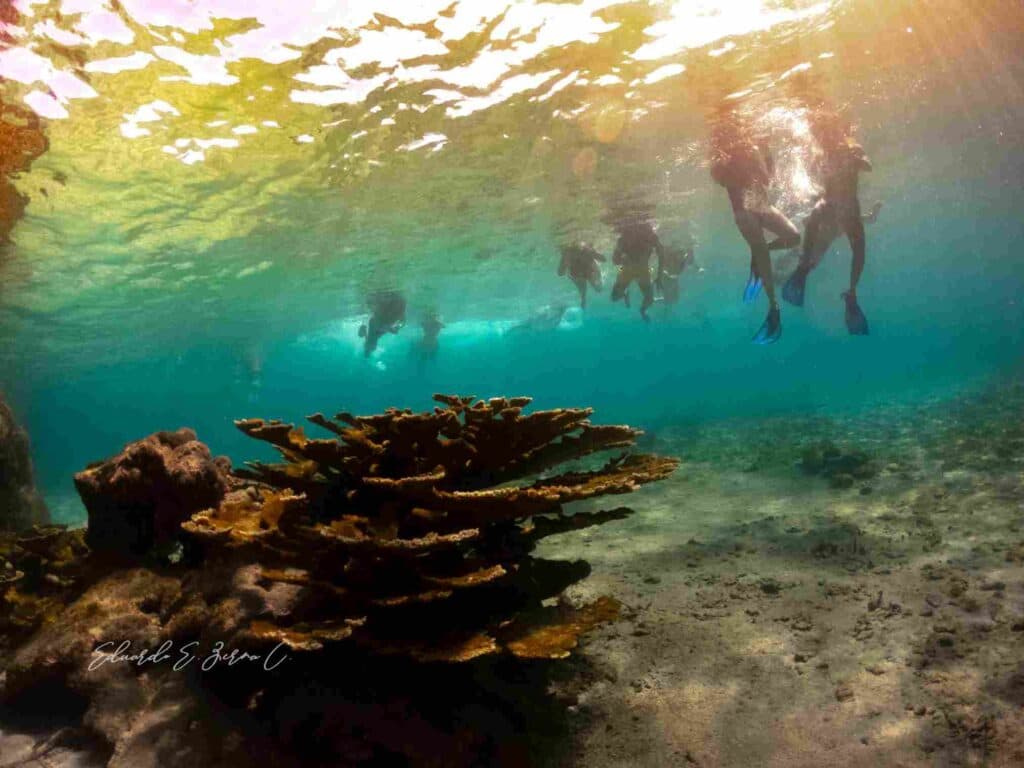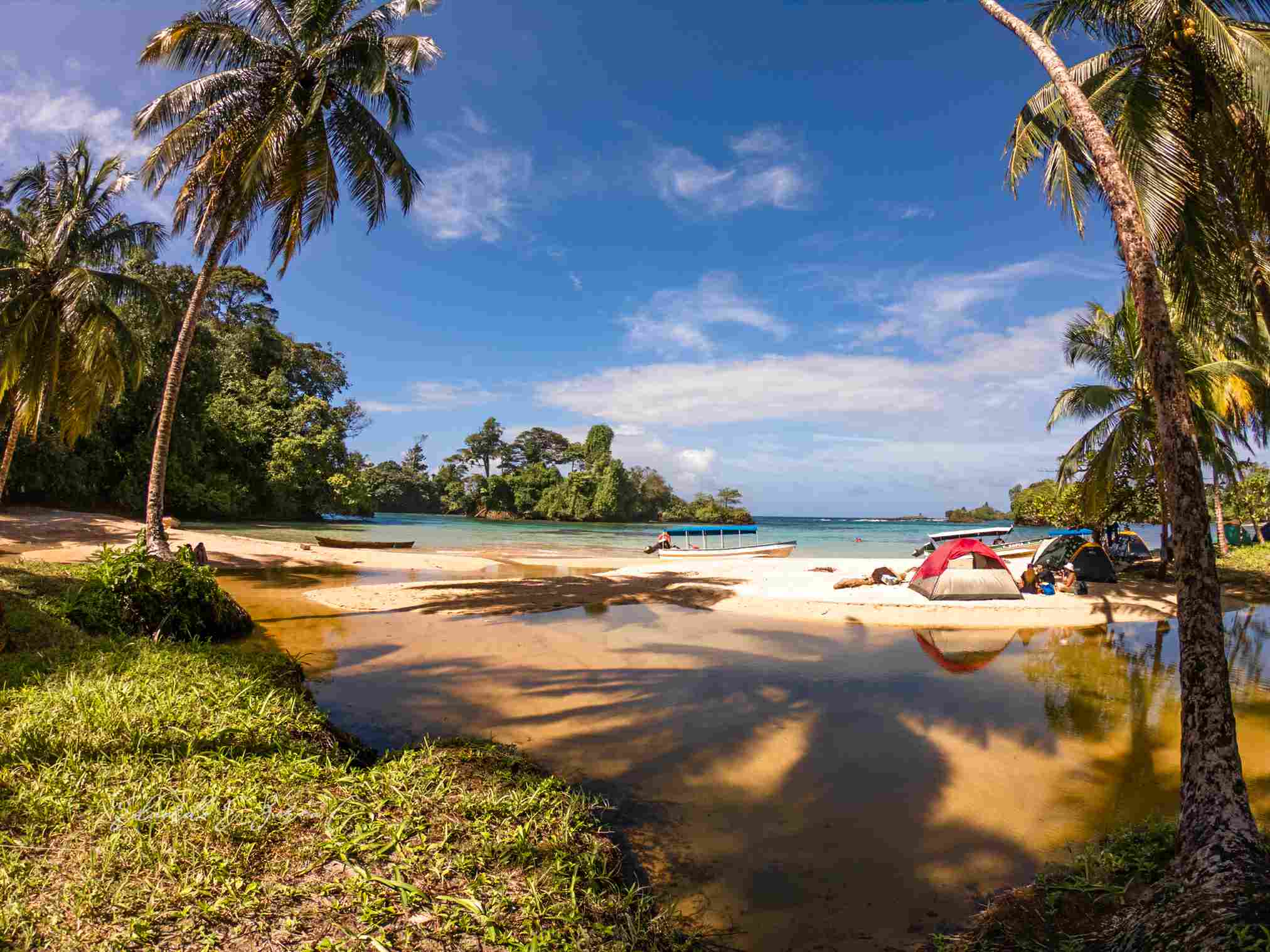This isolated island of only 3 km2 located in the Atlantic, is considered a bucket list place for those tourists who have explored Panama. This island is called Escudo de Veraguas (Shield of Veraguas), but don’t be confuse by the name. This tropical area is not part of Veragua’s province.
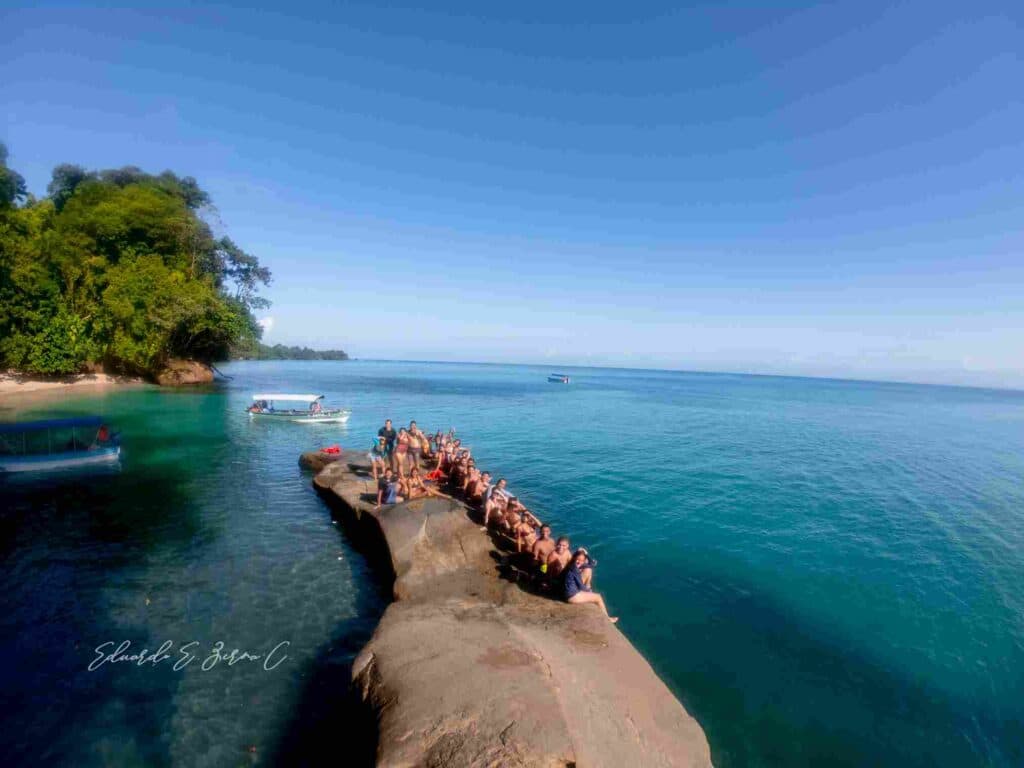
It is located 20 miles from the Gulf of Los Mosquitos and belongs to the Ngäbe-Buglé Region.
Mostly uninhabited and in its natural state, Escudo de Veraguas offers turquoise-emerald waters with species and subspecies unique in the world such as the jumping-necked bird, the Panamanian salamanders of the genus Oedipina and the three-toed pygmy sloth, endemic to this island among others.
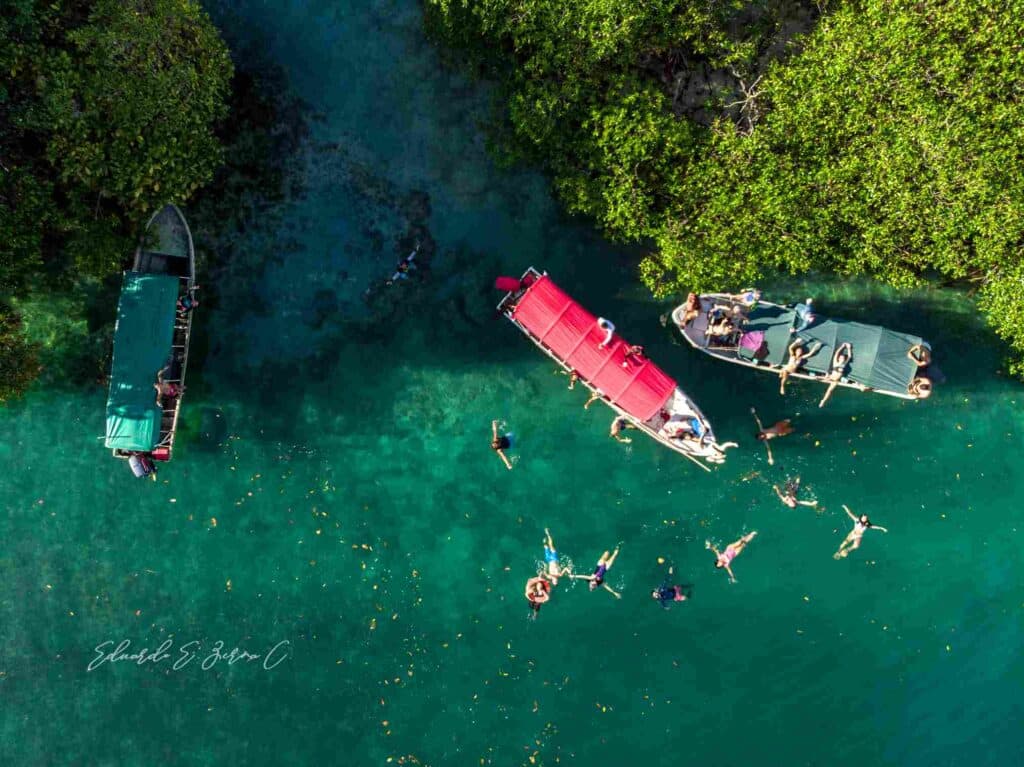
Getting to Paradise
The fastest way is to take a plane from Albrook Airport to Isla Colon at Bocas del Toro. You can also travel by road to Bocas and from there take a boat at Chiriquí Grande Port. The boat trip can last from two to four hours depending on the weather and sea conditions, the transport engine and the number of passengers, be patient and enjoy the ride; it will be worth it.
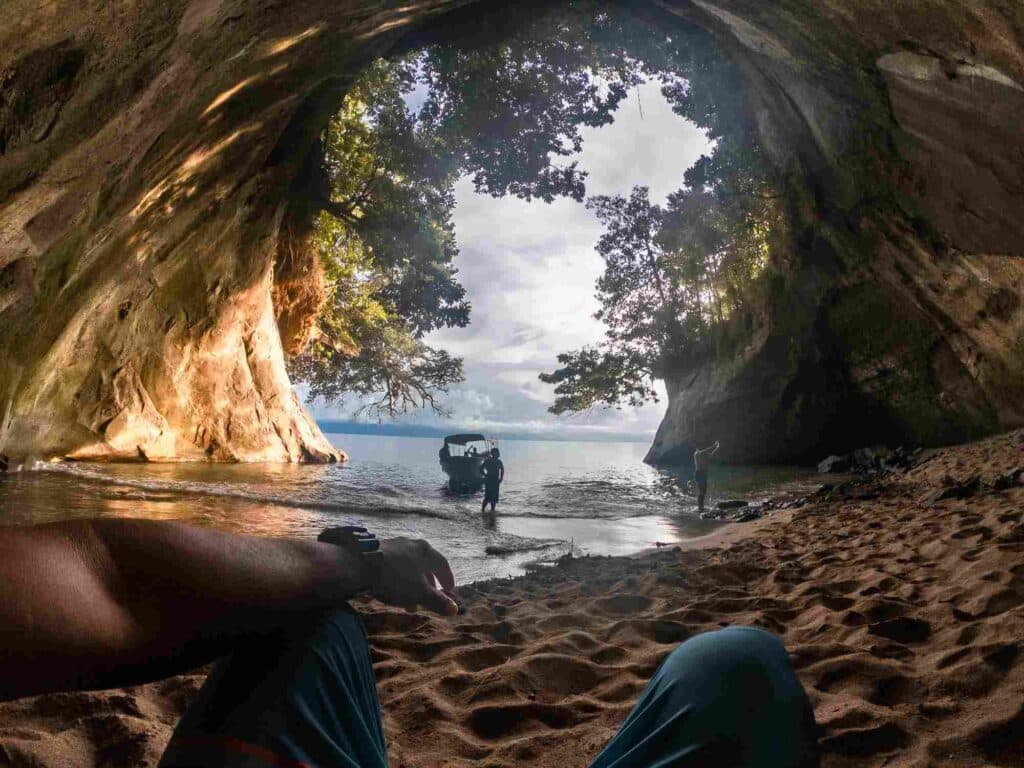
Surprises Along the Way
Before reaching Escudo de Veraguas, you can enjoy some attractive places such as the Kusapín settlement, a town where many will be surprised to see the locals in the middle of daily activities such as groups of children going to their schools, or fishermen who arrive on their boats (more frequently between August and November) looking for a place to spend the night and take a break after work.
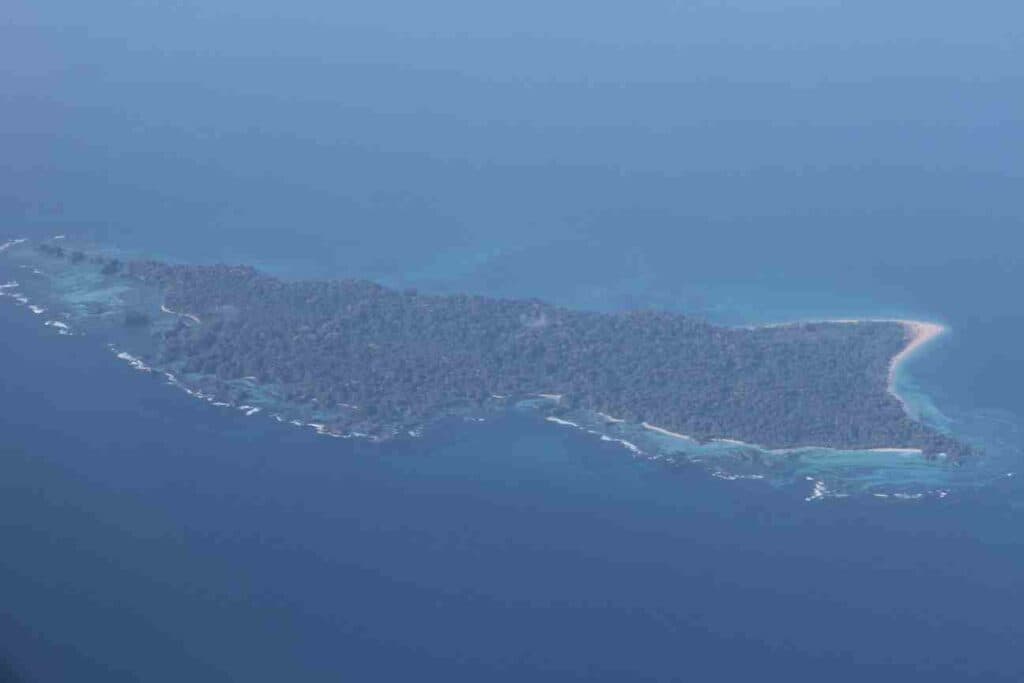
You will also find curious cliffs and hidden beaches, where you can go down to “La Cueva de la Virgen” (The virgen cave) as the ngäbles and bugles call it, for its rocky ceiling that looks like a cave where its visitors have the opportunity to shelter under its shade and take many photos with its unique beauty.
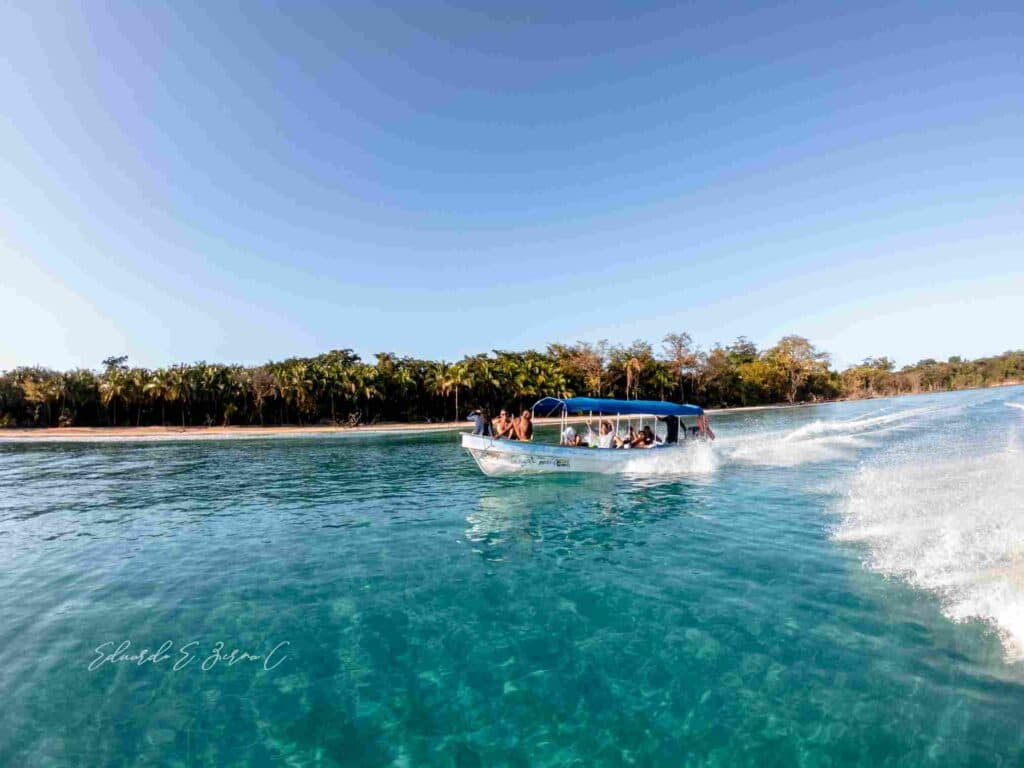
Activities to Enjoy
For the more intrepid, diving near intact coral reefs may be one of the main options. You will also see starfish, lobsters, and various fish such as snappers, mere jacks and lionfish, with which you have to keep your distance.
On this island you can find tropical marine ecosystems such as coral reefs (barrier, coastal and reef), seagrasses and mangroves. There are those who prefer to navigate its shallow channels between the islets, where they can find corners with crystal clear shallow waters to practice snorkeling.
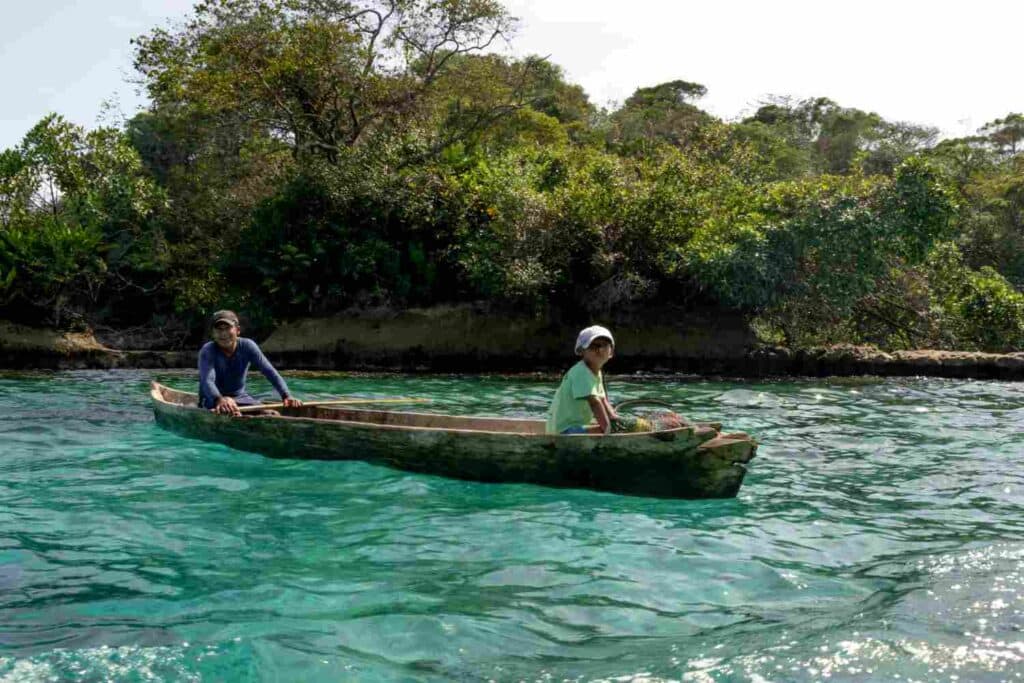
Nearby Destinations
Near Escudo de Veraguas is the Temple Dego beach cave, where you can go camping, and the small Punta Tiburon island, whose name comes from the visits of hammerhead sharks.
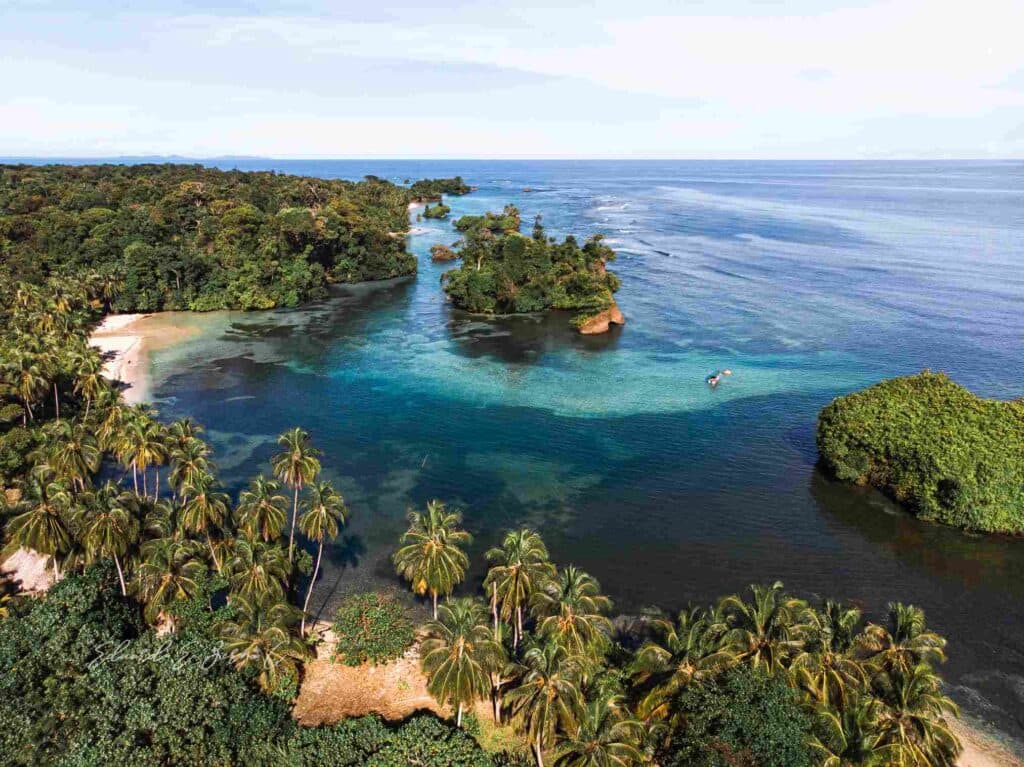
Boca de Río Caña, where the Association for the Protection of Natural Resources Ngäbe-Buglé (APRORENANB) is located, there is a community initiative that protects the nesting of hawksbill, leatherback and green turtles that depart from these beaches. Nearby is the Damani Guariviara Wetland (Ramsar site), which can only be reached by hiring guides that depart from this point.
